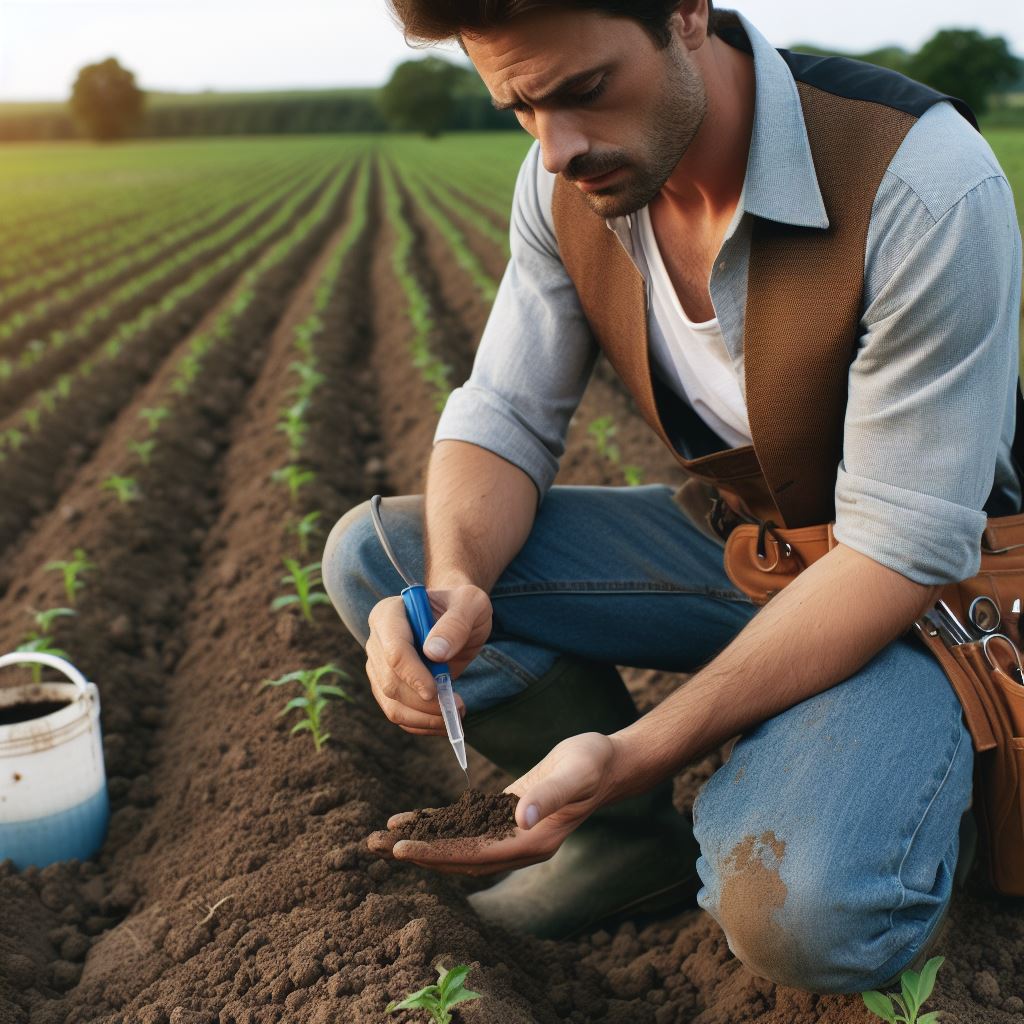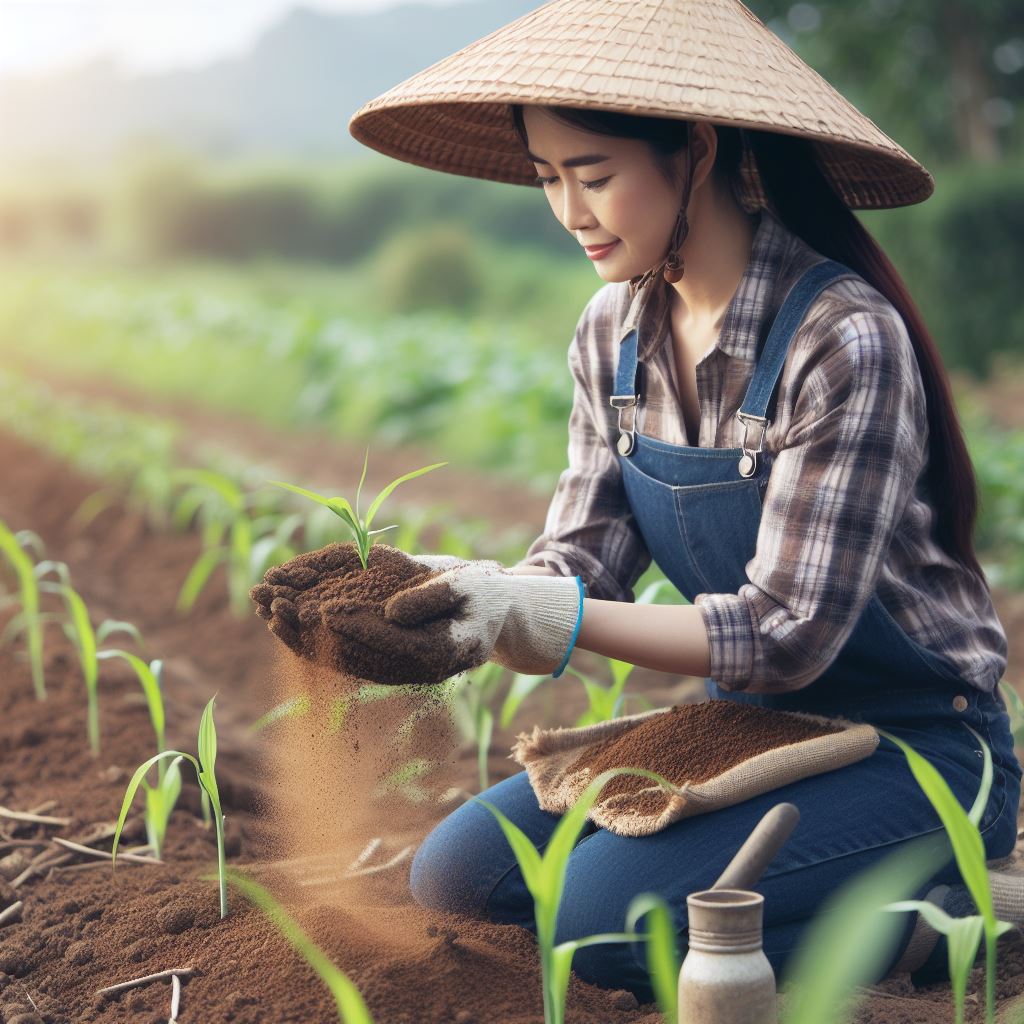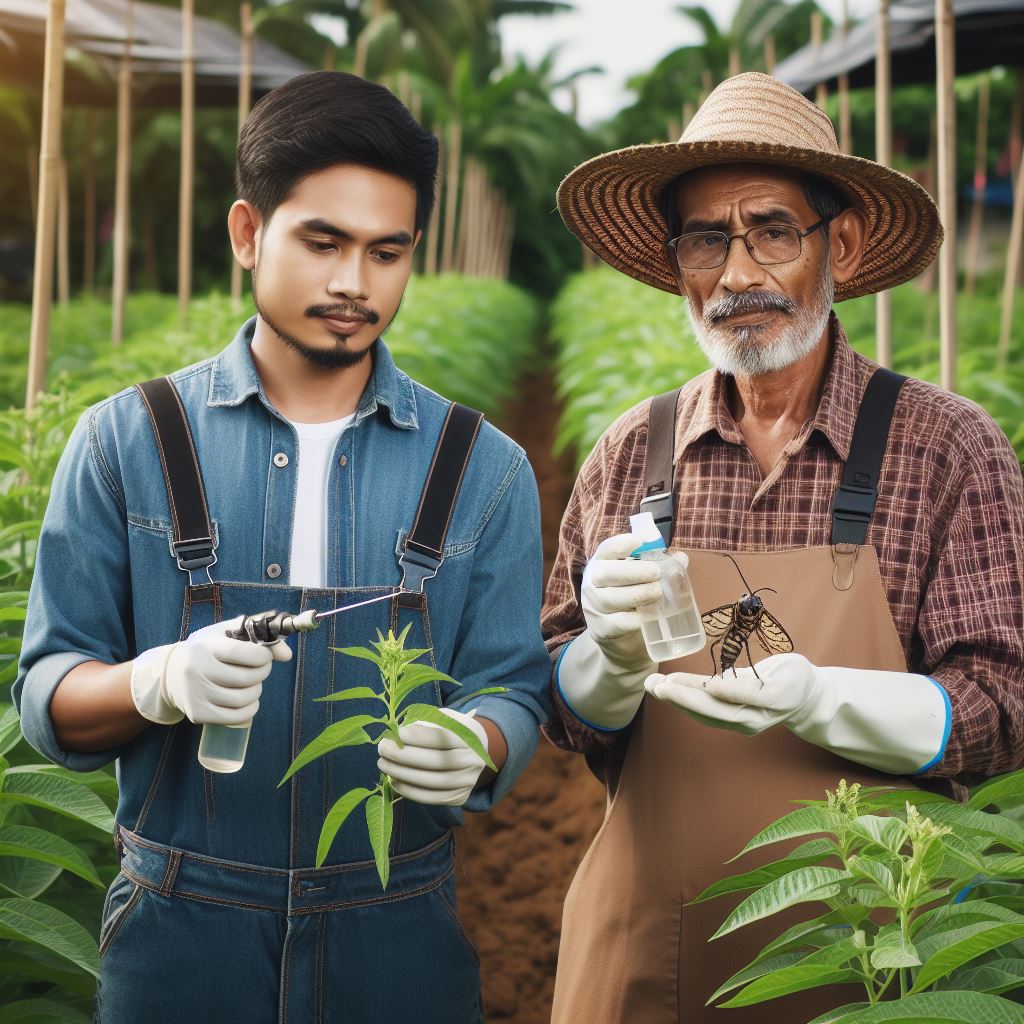Introduction
Importance of heat-tolerant crops in agriculture
Heat-tolerant crops are crucial in agriculture due to the challenges posed by climate change.
Climate change challenges
The increasing global temperatures have made it necessary to focus on crops that can withstand extreme heat.
Increasing global temperatures
The importance of heat-tolerant crops cannot be understated. With climate change, traditional crops are struggling to survive, affecting food production and security. Heat-tolerant crops offer a solution by adapting to harsher climate conditions.
Definition and characteristics of heat-tolerant crops
Ability to thrive in hot climates
Heat-tolerant crops are defined by their ability to thrive in hot climates. These crops have developed mechanisms that allow them to withstand heat stress and continue to grow and produce yields.
Resilience to heat stress
These crops have specific characteristics that make them resilient to heat stress. They possess genetic traits that help them regulate their temperature, retain water more efficiently, and combat oxidative stress caused by high temperatures.
Research and breeding programs play a crucial role in developing and improving heat-tolerant crop varieties. Scientists are identifying and incorporating traits that enhance heat tolerance into various crops, such as cereals, legumes, and vegetables.
Investing in heat-tolerant crops is essential to secure future food production. Farmers need to adapt their practices by embracing these crops to safeguard against the adverse effects of climate change.
Sustainable farming practices and crop diversification can further enhance resilience to heat stress.
In summary, they are imperative for the future of farming in the face of climate change and increasing temperatures.
By harnessing the genetic potential of these crops, we can ensure food security and the sustainability of agricultural systems worldwide.
Benefits of Heat-Tolerant Crops
They offer numerous benefits to agricultural systems, ensuring the future of farming in an increasingly hot and unpredictable climate.
Improved crop yield and quality
Increased resistance to high temperatures
As global temperatures rise, traditional crops face challenges in maintaining optimal productivity. However, they have genetic traits that enable them to withstand higher temperatures.
This resilience allows for sustained crop growth and improved yields.
Better productivity in hot regions
They are specifically bred or genetically modified to thrive in hot climates, where traditional crops often struggle.
These heat-adapted varieties are better equipped to withstand the intense heat, resulting in increased productivity and improved crop quality.
Transform Your Agribusiness
Unlock your farm's potential with expert advice tailored to your needs. Get actionable steps that drive real results.
Get StartedReduced water requirements
Lower evapotranspiration rates
Such crops exhibit reduced rates of evapotranspiration, the process through which plants lose water to the atmosphere. This means that these crops require less irrigation, reducing overall water consumption in agricultural practices.
Adaptation to limited water availability
In regions with scarce water resources, heat-tolerant crops offer a viable solution. These crops have the ability to adapt to limited water availability by efficiently utilizing water, helping farmers maintain agricultural productivity even with water scarcity challenges.
Enhanced food security
Preservation of crop production in heat-prone areas
As climate change continues to impact global food production, heat-tolerant crops play a crucial role in securing food supply in heat-prone areas.
These crops ensure that farmers can continue to grow crops even in unfavorable conditions, preserving food production and reducing the risk of food scarcity.
Mitigation of potential food shortages
By improving crop yields and resilience, heat-tolerant crops contribute to mitigating potential food shortages.
As extreme heat events become more common, heat-tolerant crops provide a buffer against crop failures, ensuring a stable food supply and minimizing the risk of hunger.
In short, the adoption of heat-tolerant crops presents significant advantages for the future of farming. These crops not only improve crop yield and quality but also reduce water requirements and enhance food security.
By harnessing the potential of heat-tolerant crops, farmers can adapt to a changing climate and sustain agricultural productivity in heat-prone regions.
Read: Water-Saving Tips for Sustainable Farming
Examples of Heat-Tolerant Crops
In the face of climate change and rising temperatures, the agricultural industry is faced with numerous challenges. One of the most pressing concerns is how to grow crops that can withstand extreme heat.
Fortunately, scientists and farmers are working together to develop and cultivate heat-tolerant crops that can thrive even in the harshest conditions.
This section will explore various examples of crops that have shown resilience to high temperatures and have the potential to transform the future of farming.
Staple food crops
Staple food crops are essential for feeding the global population, and finding heat-tolerant varieties is crucial.
Rice and Wheat
Rice, a staple in many Asian countries, has been the focus of extensive research. Scientists have successfully developed heat-tolerant rice varieties that can survive in extreme heat without compromising yield or quality.
Corn
Similarly, wheat and corn, important crops worldwide, have also been bred to be heat-tolerant, ensuring a stable food supply in the face of climate change.
Cash crops
Cash crops, which are grown for commercial purposes, are also being considered in the development of heat-tolerant varieties.
Cotton
Cotton, a widely cultivated fiber crop, is vulnerable to heat stress. However, new heat-tolerant cotton varieties have been developed, allowing farmers to continue producing this important commodity.
Soybeans
Soybeans, another major cash crop, have also been bred to withstand high temperatures, ensuring the sustainability of the soybean industry.
Coffee
Additionally, coffee, a highly valuable cash crop, is also being researched for heat tolerance, as rising temperatures pose a threat to coffee plantations globally.
Specialty crops
Specialty crops, known for their unique characteristics, are not exempt from the challenges of climate change.
Tomatoes
Tomatoes, a popular crop, can suffer from heat stress, affecting both yield and quality. By developing heat-tolerant tomato varieties, farmers can minimize the negative impact of high temperatures on their harvest.
Watermelons
Watermelons, known for their high water content, can also be affected by extreme heat. However, heat-tolerant watermelon varieties are being developed to ensure a consistent supply of this refreshing fruit.
Peppers
Peppers, which thrive in warmer climates, are also being studied for their heat tolerance, allowing farmers to continue growing this popular crop despite rising temperatures.
To cultivate these type of crops, scientists use a combination of traditional breeding methods and genetic modification. Traditional breeding involves selecting and crossing plants with desirable traits, such as heat tolerance, to create new varieties.
Showcase Your Farming Business
Publish your professional farming services profile on our blog for a one-time fee of $200 and reach a dedicated audience of farmers and agribusiness owners.
Publish Your ProfileThis process takes time but produces crops that are more easily accepted by consumers. Genetic modification, on the other hand, involves introducing specific genes into plants to confer heat tolerance.
While this method can produce more rapid results, it remains controversial due to concerns about the long-term impacts on the environment and human health.
Generally, the development of heat-tolerant crops is essential for ensuring the future of farming in the face of climate change. Staple food crops, cash crops, and specialty crops all require heat-tolerant varieties to withstand rising temperatures.
By focusing on crops like rice, wheat, corn, cotton, soybeans, coffee, tomatoes, watermelons, and peppers, farmers can adapt to the challenges of a changing climate and continue to meet the global demand for food and commodities.
Through a combination of traditional breeding and genetic modification, scientists and farmers are working together to cultivate a resilient and sustainable agricultural system.
Read: Eco-Friendly Crop Management
Breeding Techniques for Heat Tolerance
Breeding heat-tolerant crops is essential for ensuring food security and sustainable agriculture in a warming climate.
Farmers and scientists are joining forces to develop innovative strategies to increase crop resilience and productivity in high-temperature conditions. This blog section explores various breeding techniques utilized to enhance heat tolerance in crops.
Traditional breeding methods
- Cross-pollination: Cross-pollination is a conventional breeding method that involves the transfer of pollen from one plant to another, resulting in the exchange of genetic material. By selectively breeding plants with desirable heat-tolerant traits, new varieties can be developed.
- Selection of desirable traits: Traditional breeders evaluate and select plants that exhibit heat tolerance and other desired characteristics such as high yield, disease resistance, and nutritional value. Through multiple generations of selection, the desired traits can be maintained and improved.
Biotechnological advancements
- Genetic engineering: Genetic engineering offers a powerful tool for introducing specific genes responsible for heat tolerance into crop plants. Scientists can identify genes from heat-tolerant plants or other organisms and transfer them into target crops, imparting increased resilience to heat stress.
- CRISPR technology: The revolutionary CRISPR-Cas9 system allows for precise genome editing. It enables scientists to modify specific genes linked to heat tolerance in crops, enhancing their ability to withstand high temperatures. CRISPR technology offers faster and more targeted breeding compared to traditional methods.
Importance of collaboration and research
- Sharing of knowledge and resources: Collaboration among researchers, farmers, and seed companies is essential for successful breeding programs. Sharing information about heat-tolerant traits, breeding methodologies, and germplasm access can accelerate progress in developing climate-resilient crops.
- Collaborative efforts for accelerated progress: Cooperation between different stakeholders, including governments, research institutions, and international organizations, can lead to coordinated research and development initiatives. Collaboration ensures effective utilization of resources, expertise, and infrastructure, expediting the breeding of heat-tolerant crops.
In general, breeding techniques for heat tolerance in crops encompass both traditional methods, such as cross-pollination and trait selection, and advanced biotechnological tools like genetic engineering and CRISPR technology.
Collaboration and research-sharing play a pivotal role in developing heat-tolerant crops, as they facilitate the exchange of knowledge and resources, boosting progress in creating resilient agricultural systems for the future.
By harnessing the potential of breeding techniques, farmers can cultivate crops that withstand high temperatures, ensuring food security in a warming world.
Read: Crop Rotation: Top Strategies

Challenges and Future Considerations
Farming is a complex industry that constantly faces challenges to meet the growing demand for food while ensuring sustainability and adaptability to changing environmental conditions.
As we delve into the future of farming, the development and widespread adoption of these type of crops emerge as crucial solutions to combat the escalating effects of climate change on agriculture.
Regulatory frameworks and public perception
Acceptance of genetically modified crops
One of the primary challenges in introducing heat-tolerant crops is the need for acceptance by both regulatory authorities and the general public.
Genetically modified crops, which often incorporate traits for heat tolerance, have faced substantial public resistance due to concerns about safety and long-term effects.
Regulation of biotechnology in agriculture
To address these concerns, it is crucial to engage in transparent and science-based communication about the benefits of genetically modified heat-tolerant crops, highlighting their potential in ensuring food security and reducing agricultural vulnerabilities to climate change.
Additionally, regulatory frameworks need to be established to ensure proper oversight and assessment of the safety and efficacy of these crops.
Sustainable farming practices
Integration of heat-tolerant crops into existing systems
The integration of heat-tolerant crops into existing farming systems is another critical consideration.
It is essential to ensure that the introduction of these crops complements current agricultural practices, without causing disruptions or additional environmental challenges.
Farmers need guidance on how to incorporate these new crops effectively, enabling a smooth transition and minimizing potential negative impacts.
Environmental impact and conservation
Furthermore, it is important to assess the environmental implications of cultivating heat-tolerant crops.
While these crops offer resilience against heat stress, their introduction should not lead to detrimental effects on biodiversity, soil health, or water resources.
A comprehensive evaluation of their ecological footprint is necessary to ensure sustainable farming practices in the long run.
Adoption by farmers and industry
Encouraging farmers to embrace new crops
Encouraging farmers to embrace heat-tolerant crops is crucial for their successful implementation.
Education and outreach programs should be developed to inform farmers about the benefits of these crops and provide them with the necessary training and technical support for their successful cultivation.
Incentives, such as subsidies or insurance programs, can also encourage farmers to adopt these new crops.
Investment and infrastructure development
Additionally, substantial investment and infrastructure development are required to support the production and distribution of heat-tolerant crops.
Research and development initiatives should be adequately funded, and collaborations between the public and private sectors need to be encouraged to facilitate innovation and commercialization.
Moreover, the establishment of networks and facilities for seed production, storage, and efficient transportation will contribute to the widespread availability of heat-tolerant crop varieties.
To summarize, the journey towards the widespread adoption of heat-tolerant crops in farming practices is not without its challenges.
Addressing regulatory frameworks and public perception, ensuring sustainable farming practices, and promoting adoption by farmers and industry are key considerations for a successful transition to a more resilient and climate-smart agriculture.
By overcoming these challenges collectively, we can secure a future where heat-tolerant crops play a vital role in ensuring global food security and mitigating the impact of climate change on our agricultural systems.
Read: Choosing Between Organic & Chemicals
Conclusion
Recap of the significance of heat-tolerant crops
Throughout this blog section, we have discussed the significant implications of heat-tolerant crops. These resilient plant varieties have the potential to combat the negative effects of climate change on agriculture.
Potential to revolutionize agriculture:
By breeding crops that can withstand higher temperatures, farmers can adapt to changing climatic conditions and continue to provide a stable food supply. This innovation could revolutionize the agricultural industry and ensure global food security.
Call to action for further research and investment:
It is clear that the development of heat-tolerant crops and related technologies is crucial for the future of farming. Governments, organizations, and individuals should prioritize research and invest in these promising solutions.
We must support scientists, breeders, and farmers who are working tirelessly to develop new crop varieties that can thrive in hotter climates.
By investing in research, we can uncover new insights, optimize breeding techniques, and accelerate the development of heat-tolerant crops. This will require collaboration and financial resources, but the rewards will be unparalleled.
Additionally, governments should incentivize sustainable agricultural practices and provide grants or subsidies for adopting heat-tolerant crops.
Showcase Your Farming Business
Publish your professional farming services profile on our blog for a one-time fee of $200 and reach a dedicated audience of farmers and agribusiness owners.
Publish Your ProfileSuch initiatives will encourage farmers to transition towards more resilient crops, ultimately benefiting both the environment and their livelihoods.
In the end, the future of farming lies in embracing heat-tolerant crops. With their ability to withstand extreme temperatures, these crops offer hope for combating climate change and ensuring global food security.
It is time to take action and invest in this transformative solution for a more sustainable and resilient agricultural future.




